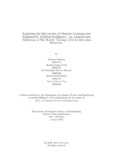| dc.contributor.advisor | Hossain, Dr. Muhammad Iqbal | |
| dc.contributor.author | Rahman, Masroor | |
| dc.contributor.author | Navid, Reshad Karim | |
| dc.contributor.author | Hossain Bhuyain, Md Muballigh | |
| dc.contributor.author | Hasan, Farnaz Fawad | |
| dc.contributor.author | Nup, Naima Ahmed | |
| dc.date.accessioned | 2023-08-08T05:20:49Z | |
| dc.date.available | 2023-08-08T05:20:49Z | |
| dc.date.copyright | 2023 | |
| dc.date.issued | 2023-01 | |
| dc.identifier.other | ID: 19101213 | |
| dc.identifier.other | ID: 19101225 | |
| dc.identifier.other | ID: 19101289 | |
| dc.identifier.other | ID: 19101579 | |
| dc.identifier.other | ID: 19101430 | |
| dc.identifier.uri | http://hdl.handle.net/10361/19351 | |
| dc.description | This thesis is submitted in partial fulfillment of the requirements for the degree of Bachelor of Science in Computer Science and Engineering, 2023. | en_US |
| dc.description | Cataloged from PDF version of thesis. | |
| dc.description | Includes bibliographical references (pages 41-43). | |
| dc.description.abstract | The use of machine learning models has greatly enhanced the capability to rec ognize patterns and draw conclusions. However, due to their black-box nature, it
can be difficult to comprehend the factors that affect their decisions. XAI methods
offer transparency into these models and aid in enhancing comprehension, exami nation, and trust in their outcomes. In this paper, we present a study on the use
of machine learning (ML) models for intrusion detection in Windows 10 Operating
systems using the ToN-IoT dataset. We investigate the performance of different ML
models including tree-based models such as Decision Tree (DT), Random Forest
(RF), Logistic Regression (LR), and K-Nearest Neighbors (KNN) in detecting these
attacks. Furthermore, we use Explainable Artificial Intelligence (XAI) techniques
to understand how the attacks influence the processes in the Windows 10 systems
and how they can be identified and prevented. Our study highlights the importance
of using XAI techniques to make ML models more interpretable and trustworthy in
high-stakes applications such as intrusion detection. We believe that this work can
contribute to the development of more robust and secure operating systems. | en_US |
| dc.description.statementofresponsibility | Masroor Rahman | |
| dc.description.statementofresponsibility | Reshad Karim Navid | |
| dc.description.statementofresponsibility | Md Muballigh Hossain Bhuyain | |
| dc.description.statementofresponsibility | Farnaz Fawad Hasan | |
| dc.description.statementofresponsibility | Naima Ahmed Nup | |
| dc.format.extent | 43 pages | |
| dc.language.iso | en | en_US |
| dc.publisher | Brac University | en_US |
| dc.rights | Brac University theses are protected by copyright. They may be viewed from this source for any purpose, but reproduction or distribution in any format is prohibited without written permission. | |
| dc.subject | Machine learning | en_US |
| dc.subject | Explainable Artificial Intelligence (XAI) | en_US |
| dc.subject | ToN-IoT | en_US |
| dc.subject | Windows OS | en_US |
| dc.subject | Data analysis | en_US |
| dc.subject | Intrusion detection | en_US |
| dc.subject.lcsh | Neural networks (Computer science) | |
| dc.subject.lcsh | Artificial intelligence | |
| dc.subject.lcsh | Machine learning | |
| dc.title | Exploring the intersection of machine learning and explainable artificial intelligence: An analysis and validation of ML models through XAI for intrusion detection | en_US |
| dc.type | Thesis | en_US |
| dc.contributor.department | Department of Computer Science and Engineering, Brac University | |
| dc.description.degree | B. Computer Science and Engineering | |

